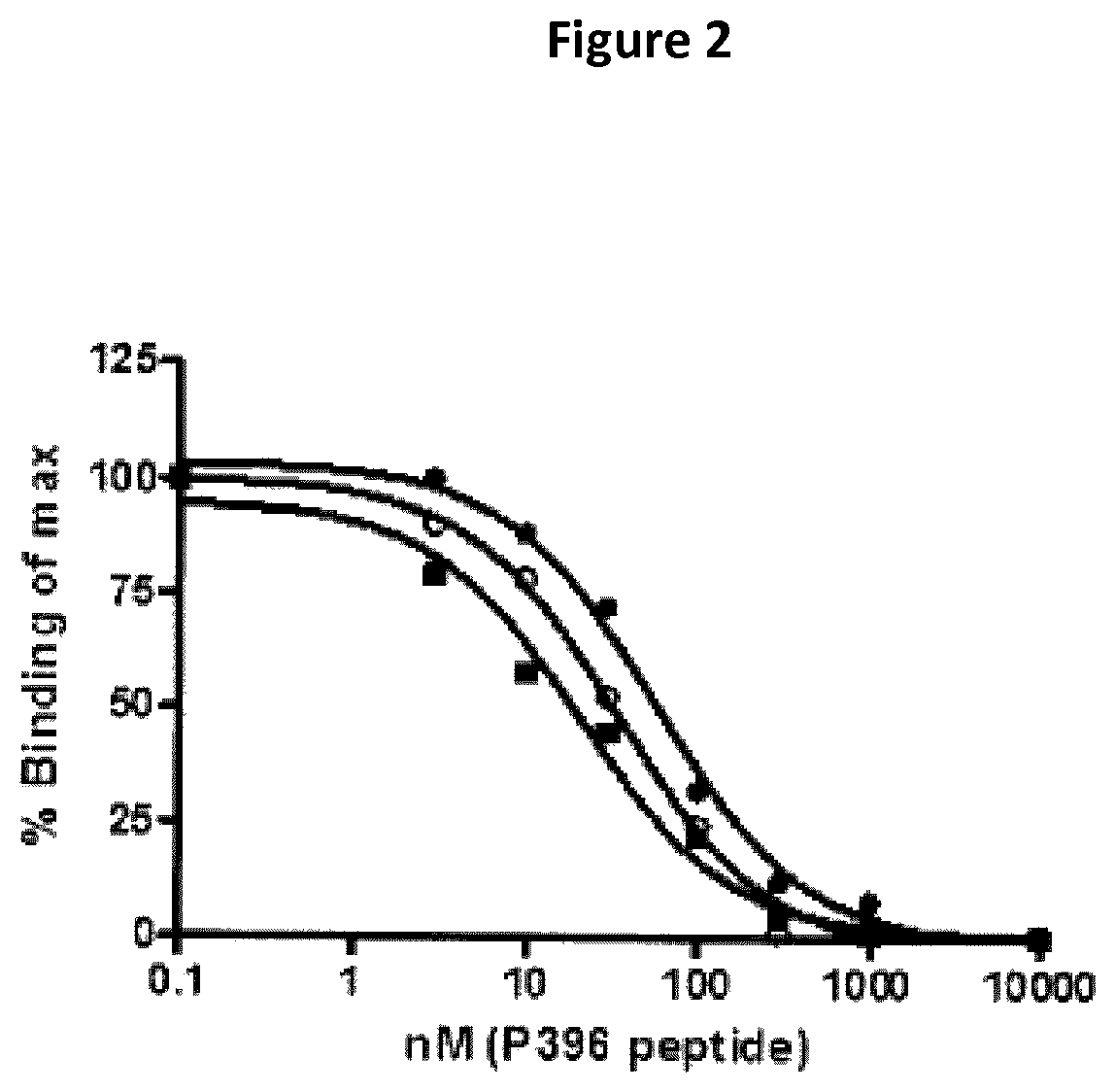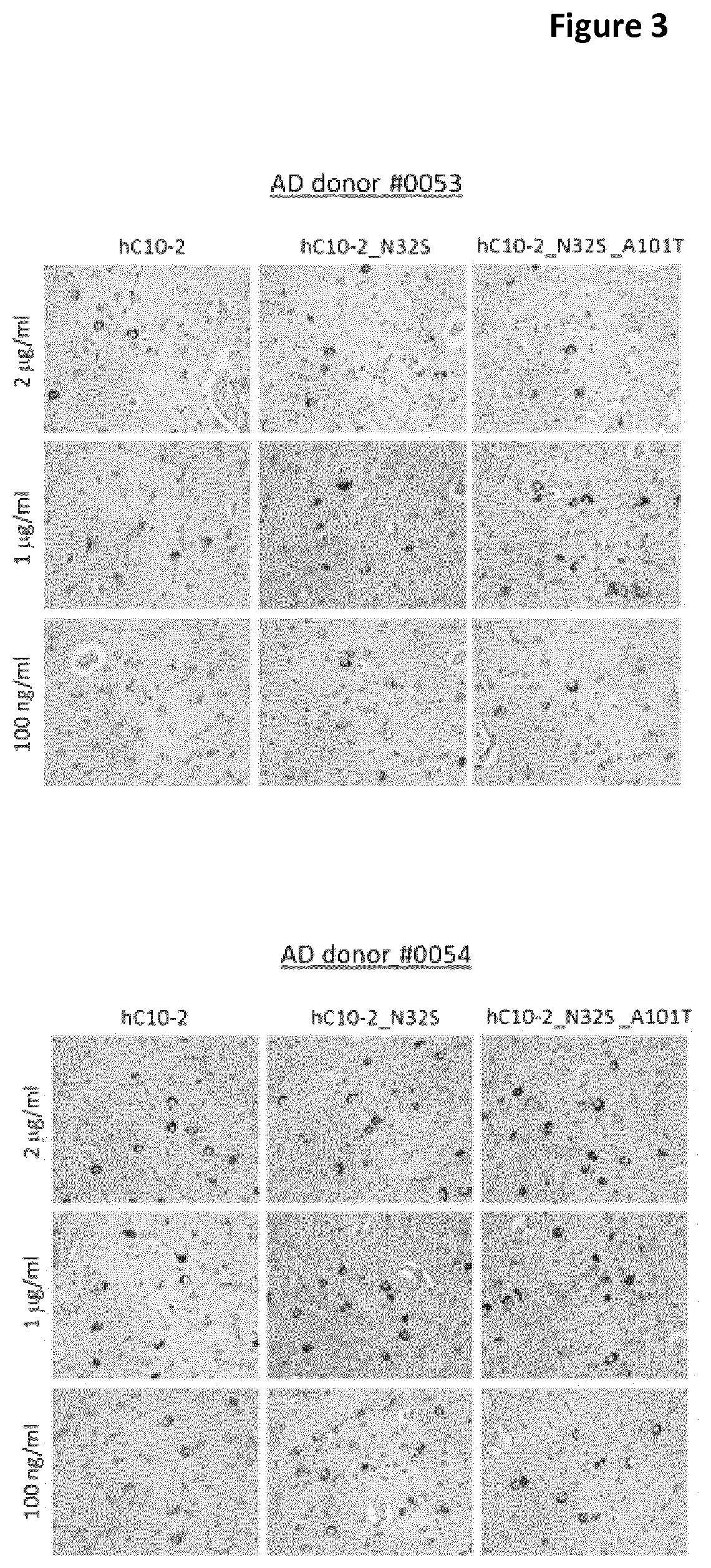Antibodies specific for hyperphosphorlated tau for the treatment of ocular diseases
a technology of antibodies and ocular diseases, applied in the field of monoclonal antibodies, can solve the problems that tau might damage the retina and other problems, and achieve the effect of reducing or attenuating the accumulation of pathological tau protein
- Summary
- Abstract
- Description
- Claims
- Application Information
AI Technical Summary
Benefits of technology
Problems solved by technology
Method used
Image
Examples
embodiments
[0249]1. A monoclonal antibody, or an epitope-binding fragment thereof, for treating a disorder of choroid and retina, wherein said monoclonal antibody, or an epitope-binding fragment thereof is capable of immunospecifically binding to the phosphorylated residue 396 of human tau (SEQ ID NO:1) such that the antibody or an epitope-binding fragment thereof does not substantially bind to SEQ ID NO:1 phosphorylated at residue 404 when residue 396 is not phosphorylated.[0250]2. A monoclonal antibody, or an epitope-binding fragment thereof for treating a disorder of choroid and retina, according to embodiment 1 wherein the treating comprises depleting a tangle or attenuating the progression of said tangle, said tangle comprising hyperphosphorylated Tau, said method comprising contacting hyperphosphorylated Tau with an antibody of the invention such that the tangle is depleted, reduced in its content of hyperphosphorylated tau or progression of tangle formation is attenuated.[0251]3. A mono...
example 1
ion of Mice with Phospho-Peptides 396 / 404
[0695]C56 / BL6 and FVB mice were immunised with 10 □g P30 conjugated phosphorylated tau 386-408 (pS396 / pS404) (SEQ ID NO:2) formulated in TiterMax adjuvant.
[0696]Mice (C56 / BL6 and FVB strains, female and male. 2- to 3-month-old mice were immunized with peptide epitope P30 conjugated phosphorylated tau 386-408.
[0697]Immunogenic P30 conjugated phosphorylated tau 386-408 (pS396 / pS404) peptide was formulated in TiterMax (400 μg / ml peptide mixed 1:1 vol:vol) following the TiterMax / vendor protocol and mice were injected subcutaneously with 20 μg peptide (100 μl) of antigen. Control mice were injected with adjuvant only. All peptide-immunised mice were boosted with 0.5 μg peptide / Titermax (10 μg / ml peptide formulated as described above and injected) at monthly intervals. The mice were finally boosted with P30 conjugated phosphorylated tau 386-408 (pS396 / pS404) without Titermax 3 days prior to fusion of splenocytes with SP-2 cells. Hybridomas were sel...
example 2
Generation
[0698]The mice were boosted with P30 conjugated phosphorylated tau 386-408 (pS396 / pS404) without Titermax 3 days prior to fusion of splenocytes with SP-2 cells. Hybridomas were selected for re-cloning cycles after positive binding in ELISA plates coated with 1 μg / ml phosphorylated tau 386-408 (pS396 / pS404), and preferential binding activity to S1 and P3 antigens from AD and TG4510 brain lysate in comparison to brain lysate from controls using dot blots and brain lysate coated ELISA or MSD plates.
PUM
| Property | Measurement | Unit |
|---|---|---|
| concentrations | aaaaa | aaaaa |
| concentrations | aaaaa | aaaaa |
| concentrations | aaaaa | aaaaa |
Abstract
Description
Claims
Application Information
 Login to View More
Login to View More - R&D
- Intellectual Property
- Life Sciences
- Materials
- Tech Scout
- Unparalleled Data Quality
- Higher Quality Content
- 60% Fewer Hallucinations
Browse by: Latest US Patents, China's latest patents, Technical Efficacy Thesaurus, Application Domain, Technology Topic, Popular Technical Reports.
© 2025 PatSnap. All rights reserved.Legal|Privacy policy|Modern Slavery Act Transparency Statement|Sitemap|About US| Contact US: help@patsnap.com



